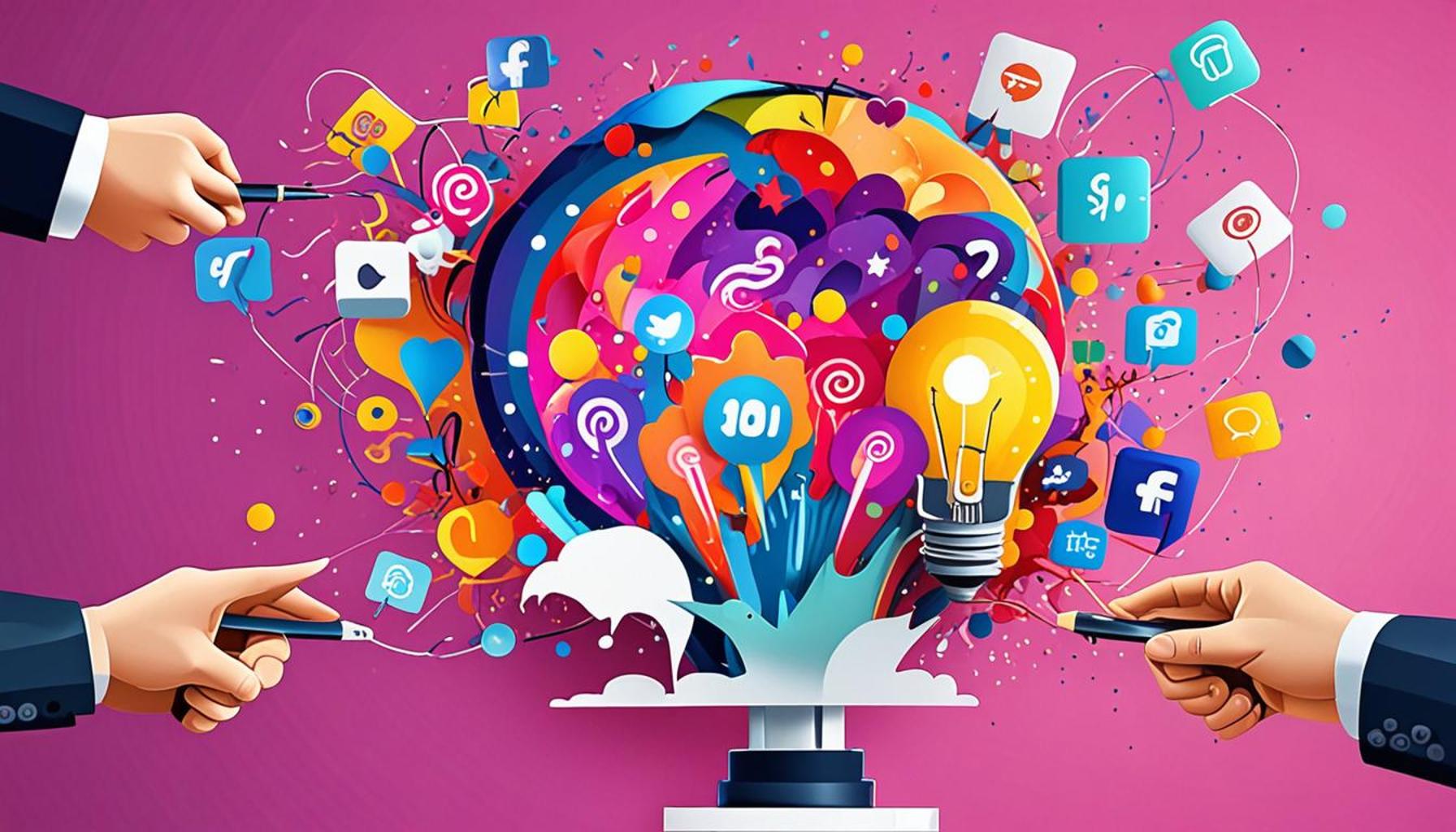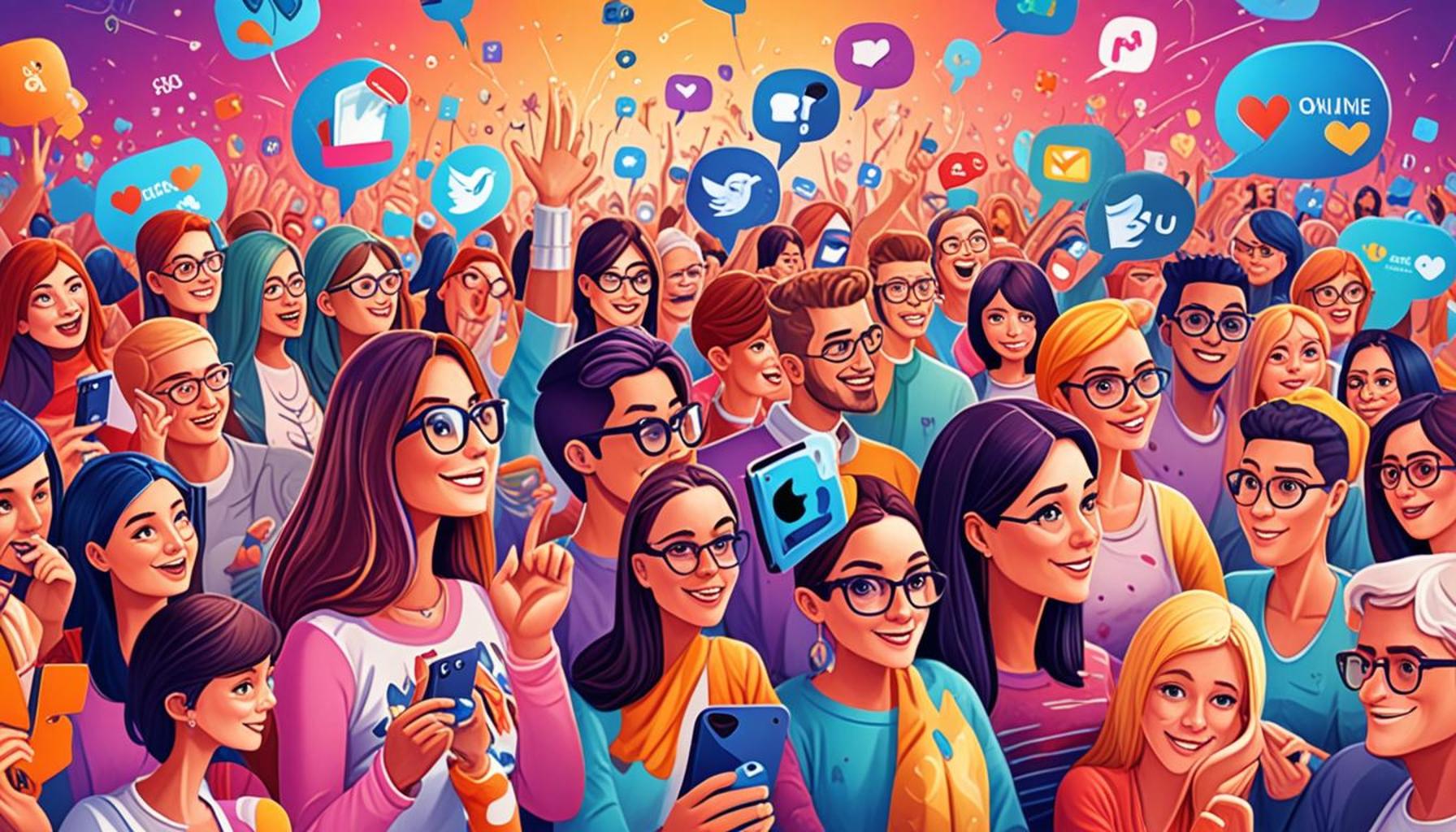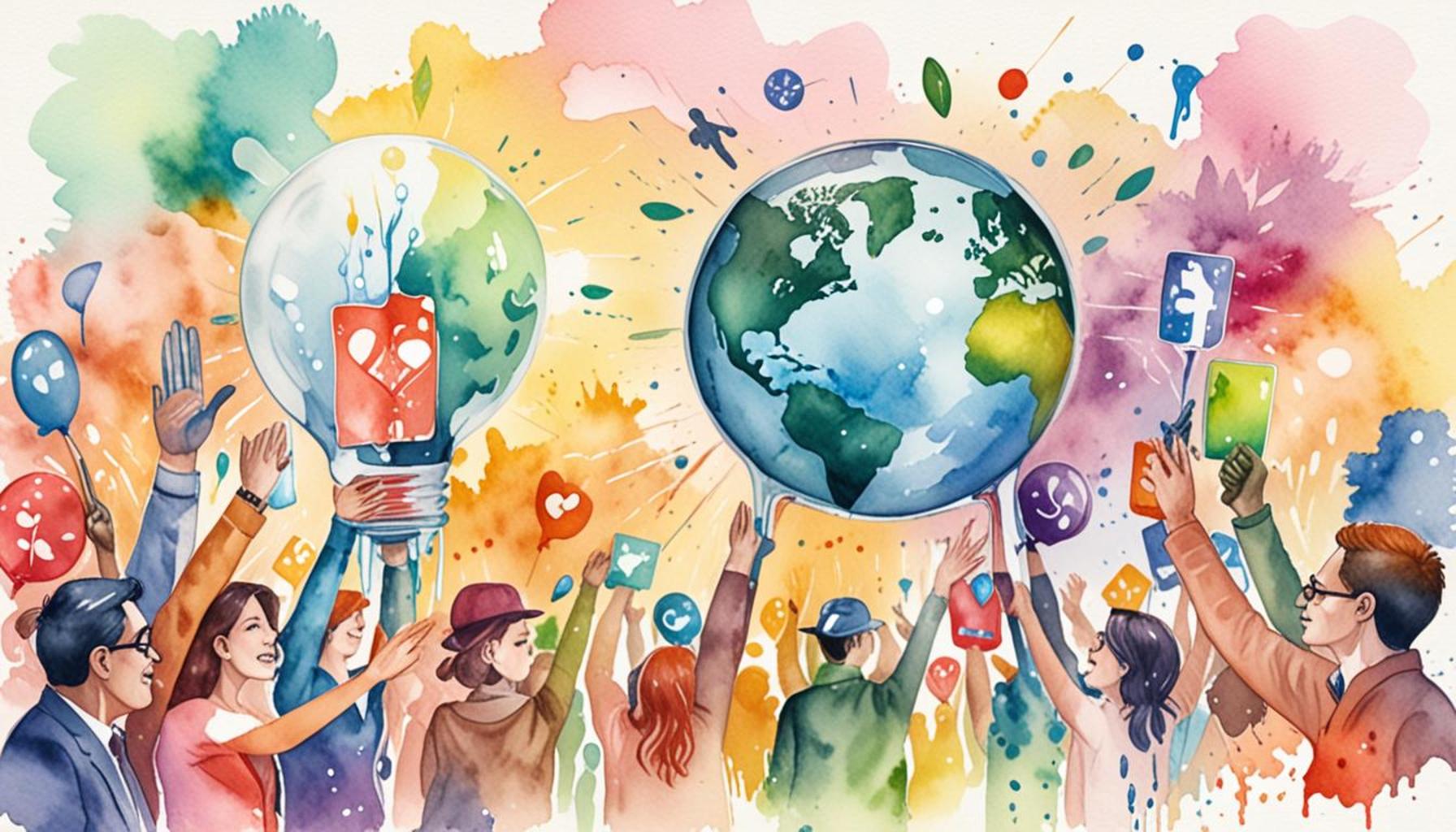Gamification in Digital Marketing: Social Engagement Through Games and Challenges

Understanding the Power of Gamification in Marketing
In the fast-paced world of digital marketing, standing out is paramount. Brands are constantly seeking innovative ways to capture consumer attention and maintain engagement. Enter gamification—the art of integrating game-like elements into marketing strategies to enhance participation and interaction.
Gamification offers businesses a unique opportunity to connect with their audience by promoting:
- Fun and Interactivity: By incorporating games and challenges, brands can transform mundane tasks, such as shopping or filling out surveys, into exciting experiences. For example, a clothing retailer might create a mobile game where users design virtual outfits. Every purchase made increases their scores, enticing them to engage more with the brand.
- Social Sharing: Elements like leaderboards and rewards encourage users to share their achievements across social platforms. This not only enhances individual engagement but also creates a community around the brand. For instance, many fitness apps enable users to share their workout achievements on social media, which fosters a sense of community while promoting the brand organically.
- Increased Retention: Engaging customers through competitions and interactive challenges often results in greater loyalty and repeat interactions. Gamified experiences can remind consumers of the brand regularly, as they may check back to see their progress or compete with friends.
Consider the success of loyalty programs that utilize gamification techniques. Popular brands have witnessed impressive growth in customer engagement when they gamified their rewards systems. For instance:
- Starbucks Rewards: Members earn stars for each purchase, which can be redeemed for free drinks or exclusive offers. This gamified approach not only incentivizes purchases but also keeps users engaged with the app and brand.
- Nike Run Club: Users can track their runs, set personal goals, and compete in global challenges. This not only fosters community and fitness but encourages users to engage with the brand regularly and invite others to join their journey.
As we delve deeper into the realm of gamification in digital marketing, it becomes evident that these strategies not only enhance consumer engagement but also drive measurable business results. According to a report by MarketsandMarkets, the gamification market is expected to reach $30.7 billion by 2025, indicating a significant shift towards more engaging marketing strategies. Understanding these elements can lead to discovering new potentials for your marketing endeavors, allowing brands to leverage the psychological triggers of fun, competition, and achievement.
Furthermore, businesses exploring gamification can tailor their strategies to different segments of their audience, ensuring that the experiences resonate with users on multiple levels. Whether it’s through interactive contests, reward-based actions, or visually engaging user interfaces, gamification has firmly established itself as a powerful tool to enhance customer interaction in the digital age.
YOU MAY ALSO LIKE: Read read another article
Driving Engagement Through Interactive Experiences
With the rise of digital platforms, businesses have the unprecedented ability to interact with customers like never before. Gamification in digital marketing not only captivates audiences but also revolutionizes how brands communicate and engage with their consumers. By embedding elements typical of games—such as scoring systems, challenges, and rewards—brands can create memorable experiences that encourage users to participate actively.
The psychological foundation of gamification lies in its ability to tap into fundamental human desires, such as competition, accomplishment, and community. This strategy provokes an emotional response, igniting a sense of enjoyment in mundane tasks while simultaneously enhancing brand loyalty. As a result, customers view interactions with the brand as more than mere transactions; they see them as opportunities for fun.
Moreover, gamified experiences can vary significantly across different platforms and demographics, offering brands the chance to tailor their approaches to suit specific audience segments. Here are a few innovative ways that brands are successfully using gamification:
- Contests and Challenges: By developing interactive contests, brands can challenge users to engage creatively with their products or services. A food brand might host a recipe competition, encouraging customers to submit their most imaginative dish using the brand’s ingredients. This not only sparks creativity but also generates user-generated content that can be leveraged in future marketing efforts.
- Reward Points Systems: Many companies create point systems integrated with mobile apps, incentivizing customers to complete specific actions such as making purchases, writing reviews, or referring friends. For example, Sephora’s Beauty Insider program rewards members with points that can be redeemed for exclusive products. This gives customers a reason to return and frequently engage with the brand.
- Quizzes and Trivia Games: Brands can use quizzes to educate consumers while entertaining them. For instance, a skincare brand may develop a quiz to help customers find the right products for their skin type, turning a basic product selection process into an engaging experience that encourages further interaction with the brand.
The effectiveness of gamification strategies in increasing brand visibility and customer loyalty is backed by data. A study from the Institute of Business and Management found that gamified experiences can increase customer engagement by up to 100%. As more brands adopt this approach, the need for standout strategies becomes increasingly evident. The potential reach of gamification does not only rely on its fun factor; it relies on their ability to create community and foster relationships.
In summary, the integration of game mechanics in digital marketing not only serves to elevate brand engagement but also builds a deeper emotional connection with consumers. As businesses work to navigate the digital landscape, those adopting gamification can significantly differentiate themselves from competitors while driving measurable success.
| Advantages | Description |
|---|---|
| Enhanced User Engagement | Integrating gamification elements into marketing strategies increases user participation, encouraging them to interact more frequently with brands. |
| Increased Brand Loyalty | By offering games and challenges, brands can foster a deeper emotional connection with their audience, which leads to stronger brand loyalty. Engaged users are more likely to return. |
Gamification in digital marketing is not merely a trend; it is a strategic approach that leverages the inherent motivations of people. One of the most compelling advantages is enhanced user engagement. When businesses incorporate gaming elements, such as points systems, badges, and leaderboards, they create an interactive experience that captivates and retains customer attention. This dynamic strategy not only increases time spent on platforms but also encourages exploration of various offerings.Moreover, gamified experiences have shown to significantly improve brand loyalty. By allowing users to participate in challenges and earn rewards, brands cultivate a sense of community among participants. This feeling of belonging can lead to repeat customers who are eager to engage with the brand. Furthermore, case studies reveal that users engaged through gamification exhibit higher rates of sharing and advocacy, making them invaluable assets in spreading the word about products and services.As digital landscapes continue to evolve, understanding the psychology behind gamification will only become more vital for marketers seeking to harness the power of social engagement. The potential to transform passive consumers into active participants opens up new avenues for business growth, making gamification an area worth exploring in depth for interested marketers.
LEARN MORE: This related article may interest you
Enhancing Customer Loyalty Through Gamified Loyalty Programs
As businesses strive to build lasting relationships with their customers, gamification has emerged as a powerful tool in enhancing customer loyalty. A well-designed gamified loyalty program transcends traditional rewards systems by adding layers of interactivity, engagement, and personal connection. According to a report by Forrester Research, companies that employ gamification strategies in their loyalty programs see a 40% increase in customer engagement over conventional methods.
One of the most compelling aspects of gamified loyalty programs is their ability to create tiered rewards systems. These systems encourage customers to engage more frequently with the brand to unlock exclusive benefits. For example, a travel agency might use this strategy by rewarding customers with points for booking flights, leaving reviews, or referring friends. As customers accumulate points, they can ascend through tiers—such as Silver, Gold, and Platinum—unlocking progressively valuable rewards, from discounts to complimentary upgrades.
Furthermore, interactive leaderboards can amplify competition among customers. By showcasing top-tier participants, businesses can foster a sense of community and camaraderie while motivating others to join the gaming experience. Starbucks’ Stars Rewards program exemplifies this approach, where customers can see their ranking and compare it against friends, urging them to engage more to earn rewards faster.
Building Community Through Collaborative Games
Gamification also enables brands to cultivate a sense of community among their customers. By designing challenges that require teamwork or collaboration, brands can not only enhance user experiences but also promote social interaction. This is particularly effective on social media platforms, where customers can form teams to participate in various gaming challenges.
Take the example of Nike’s Nike+ Run Club, where users can join virtual running challenges. Participants track their runs via an app, competing against friends and others in their community. This not only creates an engaging fitness experience but also drives social interaction as runners share their achievements and motivate each other. According to a survey by emarketer, 67% of users reported higher motivation levels when participating in group challenges, showcasing the power of gamification in enhancing social engagement.
Analytics: Unveiling Customer Insights Through Gamification
Aside from enhancing engagement and loyalty, gamification positions brands to gather valuable data on customer preferences and behaviors. Companies can use analytics tools to track user interactions with gamified experiences, providing insight into not only what customers love but also what drives their engagement. These analytics can lead to better-targeted marketing strategies, ultimately fostering even deeper connections with customers.
For instance, a clothing retailer might analyze how customers engage with a virtual try-on game on their website. By studying which styles resonate most, the brand can tailor its inventory and marketing campaigns accordingly, ensuring offerings align with customer interests. Such insight reduces guesswork and positions brands to meet customer expectations more effectively.
In an era where consumers increasingly seek personalized experiences, the integration of gamification into digital marketing strategies provides brands with a multifaceted approach to engagement, loyalty, and community building. The continued evolution of these strategies will likely reshape the landscape of digital marketing, encouraging brands to innovate continuously and reimagine customer interactions.
ADDITIONAL INSIGHTS: Expand your understanding here
Conclusion: The Future of Engagement in Digital Marketing
As we navigate the ever-evolving landscape of digital marketing, gamification has proven to be a revolutionary force in driving social engagement. By transforming mundane marketing efforts into interactive experiences, brands can not only capture attention but also cultivate lasting relationships with their customers. The incorporation of gaming dynamics—such as points systems, leaderboards, and team challenges—enables brands to develop deeper emotional connections and foster community engagement, as seen in successful programs like Starbucks’ Stars Rewards and Nike’s Nike+ Run Club.
Furthermore, the data-driven insights gained from gamified interactions empower brands to tailor their offerings and marketing strategies, ensuring a more customized customer experience. With the capacity to boost engagement rates by as much as 40%, brands that leverage gamification are better positioned to meet and exceed consumer expectations in an increasingly competitive market.
Looking ahead, the future of digital marketing will likely hinge on the degree to which brands can blend entertainment with promotion, transforming consumers from passive recipients into active participants. As businesses continue to explore innovative gamification strategies, they will not only enhance customer loyalty and engagement but also undoubtedly reshape the ways consumers interact with brands. The call to action for companies is clear: embrace gamification to unlock new realms of social engagement and foster meaningful connections that go beyond mere transactions.


